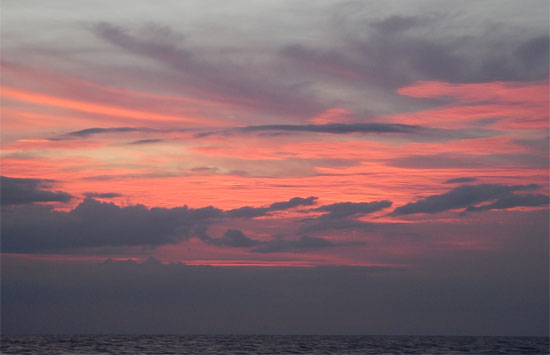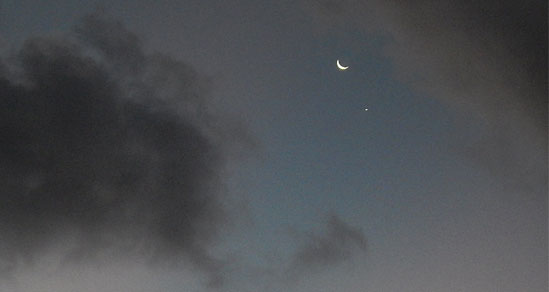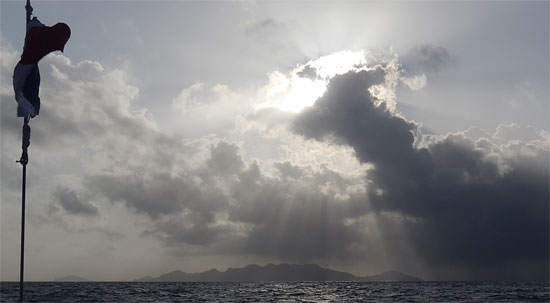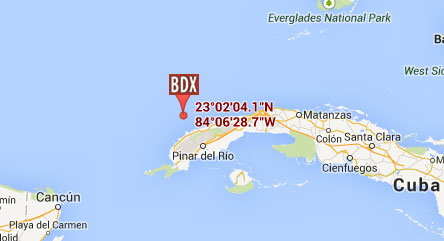Six days now since I left Panama, and the time has just flown by! Bodacious Dream and I are now around the western tip of Cuba, heading through the Gulf of Mexico and towards the Straits of Florida. The winds have gone very light this morning, after a most beautiful sunrise.
Over the course of the week, we’ve sailed through waters steeped in maritime history. This general region is named the Caribbean Sea, or around here the Western Caribbean. It is where many of the early explorers sailed and claimed new territories for their countries – most notably Spain, Portugal and France. You see that old world Spanish influence in many of the Central American countries, along with the occasional French accent. Actually, construction of the Panama Canal was begun by the French! After Columbus’ initial “discovery” of the new world, his subsequent 4th voyage of 1502-03 came through the same area I have traveled this past week.
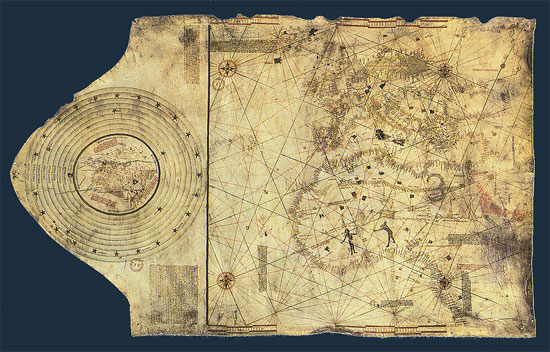
A map drafted for Columbus in 1490. Can you imagine navigating with that?
The nights out here have been cool, which lets me relax after avoiding dehydration and sunburn during the day. Sitting out on deck at night, I watch the hazy clouds drift across the sky as I wait for the sliver moon to rise and then hours later, just around daybreak, the morning star. I find this time under the stars is the best time for reflection.
I find myself drifting back in time and imagining what it was might have been like to be an early explorer in these waters. I have the luxury of modern technology as well as the charts and notes of earlier sailors’ experiences to guide me; they had nothing.
When they would come upon an island unexpectedly, such as Providence Island, they would have to take great precautions not to end up on shallow reefs or rocks. They would often drop anchor quite a ways out and put a crew in a small boat to explore the area and coastline looking for an acceptable bay or harbor in which to anchor.
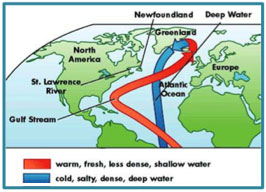 Another notable natural phenomenon of this area that adds to its historical significance is the presence of the Gulf Stream. Actually, this area I’m passing through now, is where the Gulf Stream rises back to the surface and begins to drive currents north from the western tip of Cuba, along the Florida coast and up the eastern seaboard to Cape Hatteras before it veers off across the North Atlantic towards Ireland and the British Isles. As it moves eastward, it cools, submerges and then travels, deep in the ocean like a conveyor belt, back to this region where, heated by the tropical sun, the current resurfaces once again. As Tegan Mortimer has shown us in her excellent Wind & Weather Science Note #2, the effect these powerful currents have on local waters when they converge with them help to create large and active zones for sea life to develop and thrive.
Another notable natural phenomenon of this area that adds to its historical significance is the presence of the Gulf Stream. Actually, this area I’m passing through now, is where the Gulf Stream rises back to the surface and begins to drive currents north from the western tip of Cuba, along the Florida coast and up the eastern seaboard to Cape Hatteras before it veers off across the North Atlantic towards Ireland and the British Isles. As it moves eastward, it cools, submerges and then travels, deep in the ocean like a conveyor belt, back to this region where, heated by the tropical sun, the current resurfaces once again. As Tegan Mortimer has shown us in her excellent Wind & Weather Science Note #2, the effect these powerful currents have on local waters when they converge with them help to create large and active zones for sea life to develop and thrive.
For the past few days, there were times when I sensed a positive current pushing me along at a knot or more. At other times, there was no current or even an adverse current slowing me down. Stepping back to a more macro-view, we know now that the Gulf Stream waters swirl around erratically as they develop. Depending on where you are, you can have any range of positive or adverse currents. As I move closer to Florida, I will slip more solidly into the current, which will definitely speed my travel. And at night, in those warmer waters, I hope to see eruptions of marvelous bioluminescence!
So, as we travel on towards more familiar home waters, I will leave you with this video of a stampede of dolphins that visited me for a time the other day. What a thrill for me to have them surround me.
A Dolphin Stampede! (Here’s another shorter clip.)
Watching them leap skyward reminds you what life on the seas was like before the arrival of all the whizzy gizmos that we carry with us today. Following their fluid movements took me to thoughts of how much has NOT changed in the eons of the gulf stream flowing, the trade winds blowing and great marine mammals swimming – a comforting perspective for sure!
More soon,
– Dave, Bodacious Dream & (the sun-burned) Franklin

